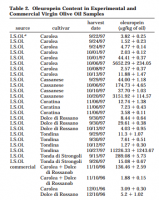Travis
Member
- Joined
- Jul 14, 2016
- Messages
- 3,189
This may seem strange, but DHT actually stimulates hair growth of the beard—this is how it got there in the first place. Women with too many androgens also get facial hair.Interesting to see these theories being worked out. I'm following the best I can, though I'm not a scientist. I mention this in case my question(s) show my glaring ignorance.
I've been using my hair topicals on my beard as well, in an attempt to stimulate growth in thinner areas. I was doing this, as I wasn't using anything anti-androgen/DHT in my solution. If I'm understanding the approach of this thread, it is an anti-androgen/DHT for scalp growth. Would it be safe to say, these ingredients should not be used on the beard area? Thanks for any input.
A nice run-down on this is the articles of Valerie Randall:
- Randall, Valerie Anne. "Hormonal regulation of hair follicles exhibits a biological paradox." Seminars in cell & developmental biology. Vol. 18. No. 2. Academic Press, 2007.

